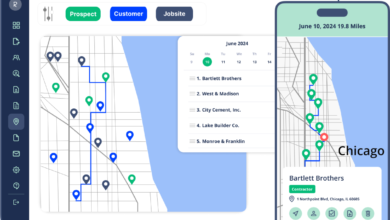Exploring the OpenAI o1 Model: Revolutionizing AI for Writing and Essay Generation

The rise of artificial intelligence (AI) has transformed countless industries, from healthcare to transportation. Among these advancements, the OpenAI o1 Model emerges as a groundbreaking innovation, particularly in the realms of AI for Writing and Essay Generator technology. This model has redefined how content is created, edited, and optimized, offering unparalleled tools for students, professionals, and businesses alike.
Understanding the OpenAI o1 Model
At its core, the OpenAI o1 Model is a next-generation AI framework designed to perform complex language-based tasks with unmatched precision. It builds on the success of its predecessors, integrating cutting-edge algorithms and deep learning techniques to process and generate human-like text. Unlike traditional AI models that are task-specific, the OpenAI o1 Model is versatile and adaptable, capable of tackling diverse challenges across industries.
For instance, it excels in understanding context, tone, and intent, making it an invaluable tool for creating essays, articles, and other forms of written communication. By leveraging its capabilities, users can streamline workflows, enhance productivity, and produce high-quality content in less time.
The Role of AI in Writing
The integration of AI for Writing has become a game-changer for content creators and businesses. The OpenAI o1 Model, with its advanced natural language processing (NLP) capabilities, enables users to:
- Generate High-Quality Content: AI-powered writing tools like the OpenAI o1 Model can draft articles, reports, and blogs with minimal input. By analyzing vast datasets, the model produces text that is coherent, engaging, and tailored to the user’s needs.
- Enhance Creativity: While some fear that AI stifles creativity, the OpenAI o1 Model proves otherwise. By providing suggestions, alternative phrasing, and fresh ideas, it acts as a collaborative partner for writers.
- Save Time: Writing long-form content or academic papers can be time-consuming. With the help of AI, users can generate drafts in minutes, leaving more time for revisions and personal touches.
- Improve Grammar and Style: Beyond generating text, the model serves as an intelligent editor. It identifies grammatical errors, awkward phrasing, and stylistic inconsistencies, ensuring polished and professional results.
Essay Generation: A Student’s Best Ally
The advent of Essay Generator tools powered by the OpenAI o1 Model has revolutionized academic writing. Students often struggle with organizing their thoughts, conducting research, and meeting deadlines. The OpenAI o1 Model addresses these challenges by:
- Structuring Essays: The model can create outlines based on specific topics, ensuring logical flow and coherence.
- Providing Research Assistance: By analyzing relevant sources, the model extracts key information and integrates it seamlessly into essays.
- Ensuring Originality: With built-in plagiarism detection features, the OpenAI o1 Model guarantees that generated essays are unique and citation-friendly.
For example, a student tasked with writing a paper on climate change can input the topic into an Essay Generator powered by the OpenAI o1 Model. Within minutes, they receive a well-structured essay complete with an introduction, main body, and conclusion, along with references to credible sources.
Benefits of the OpenAI o1 Model in Writing and Essay Generation
The OpenAI o1 Model’s capabilities extend far beyond basic text generation. Here are some of its standout benefits:
1. Customization
Users can tailor the output to match specific requirements, such as word count, tone, and style. This is particularly useful for academic writing, where strict guidelines must be followed.
2. Versatility
The model supports multiple languages and formats, making it a go-to tool for global users. Whether it’s drafting a business proposal or creating a literary analysis, the OpenAI o1 Model adapts to diverse needs.
3. Efficiency
By automating repetitive tasks, the model reduces workload and accelerates project timelines. For students, this means more time to focus on learning and less stress about deadlines.
4. Accessibility
With user-friendly interfaces, even individuals with limited technical expertise can leverage the OpenAI o1 Model. Many platforms offering AI for Writing and Essay Generator tools integrate the model seamlessly into their systems.
5. Continuous Learning
The OpenAI o1 Model improves over time by learning from user interactions. This ensures that the quality of generated content keeps getting better.
Applications of the OpenAI o1 Model
The OpenAI o1 Model’s potential applications are vast, but its impact on writing and essay generation stands out. Let’s explore some of the ways this technology is being utilized:
1. Academic Writing
Students and researchers use the model to draft essays, research papers, and theses. Its ability to understand complex topics and generate insightful content makes it an essential tool in academia.
2. Business Communication
Companies rely on AI for Writing to create reports, emails, and presentations. The OpenAI o1 Model ensures that the content is professional, concise, and aligned with brand guidelines.
3. Content Marketing
Marketers use the model to generate blog posts, social media captions, and ad copies. Its ability to analyze audience preferences ensures that the content resonates with target demographics.
4. Creative Writing
Authors and screenwriters can use the model as a brainstorming partner, generating ideas for plots, characters, and dialogues.
5. Personal Writing
From drafting resumes to writing personal statements, the OpenAI o1 Model simplifies tasks for individuals across various stages of life.
Addressing Concerns About AI Writing Tools
Despite its advantages, the use of AI in writing and essay generation has sparked debates. Critics argue that it may lead to dependency, reduce creativity, and raise ethical questions. However, these concerns can be addressed through responsible use:
- As a Supplement, Not a Substitute: The OpenAI o1 Model should complement human effort, not replace it. Writers can use it to enhance productivity while retaining their unique voice.
- Ensuring Ethical Use: Educators and institutions can establish guidelines for using Essay Generator tools, ensuring that they promote learning rather than shortcuts.
- Fostering Creativity: By automating mundane tasks, AI allows writers to focus on ideation and storytelling.
The Future of AI in Writing
As AI continues to evolve, the capabilities of models like OpenAI o1 will only expand. Future updates may include:
- Enhanced Multimodal Features: Integrating text, images, and videos to create comprehensive content solutions.
- Real-Time Collaboration: Allowing multiple users to work on a document simultaneously with AI assistance.
- Emotion Recognition: Adapting tone and style based on the emotional context of the content.
The possibilities are endless, and the OpenAI o1 Model is at the forefront of this transformation.
The Transformative Potential of AI-Powered Writing Tools
The OpenAI o1 Model is more than just an AI tool; it is a catalyst for innovation in writing and essay generation. By leveraging its capabilities, users can unlock new levels of efficiency, creativity, and precision. Whether you’re a student seeking an Essay Generator or a business professional exploring AI for Writing, the OpenAI o1 Model offers unparalleled solutions to meet your needs. As we embrace this technological revolution, one thing is clear: the future of writing is here, and it is powered by AI.





